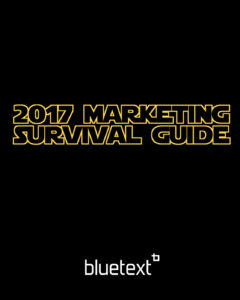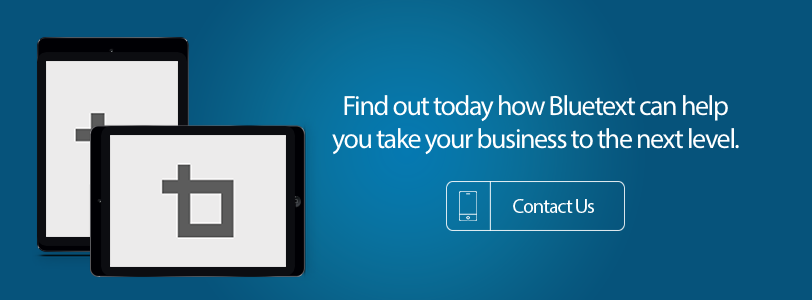Digital marketers are struggling mightily to understand how to reach consumers and prospects across social media. A platform that looks like the dominant king one day may quickly slip behind in new adoption and usage. Today’s trends may appear to be little more than a flash in the pan tomorrow. The challenge for marketers is to understand which platforms to leverage and when to reach new audiences, especially those key younger age groups that actually are the trend setters, even when those audiences have proven to be impressively fickle.
New research of Generation Z shows just how tough it has become to discern long-term trends with social media, and confirms how fleeting its members’ infatuation with previous leading platforms really is. The survey, of more than 300 college and high school students, the core demographic of Generation Z, was conducted earlier this month by the market research firm SCG. The top findings – not too surprising: This age group loves social media, and visits its favorite platform upwards of 11 times each day. What is surprising: That platform isn’t Facebook or Twitter. In fact, these younger millennials are all about Snapchat.
According to the survey 78 percent said they were daily Snapchat users, while slightly fewer–76 percent–reported using Instagram every day. Facebook was down to 66 percent. And while that not might not seem like a huge difference, consider that Facebook is now the granddaddy of social media yet a full third of the next generation of users are not tethered to it. They really like SnapChat’s fun new features, such as the different augmented reality lenses that were such a hit last year and its Geo-fencing tool. And before feeling sorry for Facebook, its dominant position in the market, including not just Facebook but its ownership of Instagram and WhatsApp, means it will be the 800-pound gorilla in the market for years to come.
Looking for an effective approach for your social media strategy?
Give us a call and see how we can help.
It’s the beginning of a new year, and that means that industry experts will pull out their magic eight balls, clean their Google glasses, and attempt to see into the future. But as a marketer, it’s going to be tricky to understand what trends are real, and which ones aren’t worth spending time or resources chasing. Here’s what we can confidently predict: When technology experts take a stab at projecting into the future, they both overestimate the rate of consumer adoption and underestimate the resistance from political regulation. We all love the idea of Amazon’s warehouses in the sky delivering our packages by remote-controlled drones, and we may well be able to manufacture self-driving cars that are safe and efficient. But saying yes to UAVs circling our neighborhoods and giving the green light to driverless vehicles, that’s a different story altogether.
When technology experts take a stab at projecting into the future, they both overestimate the rate of consumer adoption and underestimate the resistance from political regulation. We all love the idea of Amazon’s warehouses in the sky delivering our packages by remote-controlled drones, and we may well be able to manufacture self-driving cars that are safe and efficient. But saying yes to UAVs circling our neighborhoods and giving the green light to driverless vehicles, that’s a different story altogether.
Digital marketing is evolving by the hour, but we can make some predictions on what’s going to be important to markets this year. Most important is how to survive these changes. So what should we expect in 2017 that may be more down to earth and actually come to pass, and how should you plan your strategy?
To find out, download our 2017 Digital Marketing Survivor Guide.
Today’s “need for speed” mantra is evident in everything we do. Your website is no exception. We all want everything to be instantly available at our fingertips – including our online experience. For websites, that means the faster the page speed, the better. Top B2B Marketing Agencies have been working with their clients for the past decade to improve page speed, looking for all sorts of tricks and tips to reduce load time and improve response. Some major players – including Akamai in the hosting space, Google’s AMP and Lightening from Facebook – have developed significant technologies and innovations that are worth considering for your digital game plan.
A survey from Statistic Brain concluded that the average person’s attention span has fallen to 8.25 seconds down from 12 second in 2000. This statistic is projected to continue to decline. As a marketer, that means you have even less time to grab your audience’s attention before they’re on to the next shiny object.
Page speed is defined as the load time of one particular page on your website. Ideally, the site is completely rendered and ready to go on a screen within microseconds of someone typing in its URL and hitting enter. Does this seem like an impossible ask? The short answer is yes. Since a feat such as this is borderline impossible in most cases, we’re forced to resort to more realistic metrics to achieve this lofty goal.
Here are the top three reasons why lightning fast page speed is essential for the success of your organization’s website.
1) It’s all about the User
User experience is the number one priority. Without them, of course, your site is just a jumble of html that serves no purpose. Site optimization is key and should be performed often.
- Fast page load time means users will be able to quickly navigate the site, increasing pages per session, time on page, and (possibly) decreased bounce rate.
- Better numbers for the metrics listed above mean better rankings from Google.
- Referrals become more likely when a user has had a good experience on your site.
In today’s ultra-competitive marketplace, a positive user experience could easily be the edge between your site and someone else’s.
2) The Fast and the Mobile Friendly
Google expects a mobile page to render above the fold in one second or less. Since more than half of the 3.4 billion daily Google searches are done on mobile devices, it’s imperative to have a fast and mobile-friendly site. According to an experiment done by Moz, Google has indicated it may actually be measuring “time to first byte” (TTFB) — which is how long it takes the first byte of information to get from a server to a browser.
Now that you know what Google’s looking for, there are numerous tools to help pinpoint where improvements could be made on a site’s backend. At Bluetext, we like to take out any guesswork and get our insights straight from Google. Put any URL into Google’s PageSpeed Insights tool and it provides recommended fixes, as well as a speed score on both mobile and desktop.
3) Page Speed + Stellar CTA = Increased # of Conversions
It’s been proven that page speed has a direct correlation to the number of conversions as long as it’s paired with an enticing Call to Action (CTA). For example, if a user wants to download a white paper but has to wait for the page to load, that user will lose interest and most likely leave the site. For businesses, that means a prospect is bouncing and may be lost for good.
Every second counts. Don’t wait, start optimizing your site speed today because if you’re not recognizing the need for speed, you might as well go home. For more tips on making a great first impression? Click here: https://bluetext.com/top-branding-agencies-know-never-get-second-chance-make-first-impression/
Need help speeding up your digital platform to get the performance you want ? Contact us
Some economic experts are predicting that by 2025, 40% of today’s jobs will be replaced by technology. That’s a sobering thought for nearly everyone.
For those of us in the digital marketing space, it is especially alarming. After all, automation and the rise of bots threaten to displace many functions in today’s digital agencies. We took a close look at our own agency, position-by-position, to see if we could draw any insight from these economic forecasts. Our conclusion is that digital agencies servicing enterprise clients won’t be on the endangered list anytime soon. There are too many essential activities that call for human interaction and a personal touch in order to drive a successful, large-scale campaign that simply can’t be replicated by technology.
Looking at the digital agency of the future on a role-by-role basis may be useful to clients wanting to know what to expect from an agency in this evolving market, as well as agency executives and practitioners. Here’s how the roles in a typical agency will be affected by the constant innovation and disruption happening in digital marketing.
Project Managers. Account and project managers may be among the most secure in the agency of the future, for the simple reason that many of the activities that take place between clients and PMs require human interaction. Relationships and expectation-setting is an art and a science; one that no artificial intelligence, robotics, or automation software will ever be able to completely replace. Clients will always want two human eyes that stare into their eyes and say, “No need to worry, we’ve got your back”.
Creative and Art Directors. The rise of creative collectives and mixed media partnerships are creating increased cohabitation for many accounts, and the integration of hyper-specialists that deliver, for example, the exact lighting or the perfect clay sculpture from which to 3D model. These new resources from outside the traditional agency will deliver value in the form of wide-ranging creativity. Creative leads will be able to surf trends and partner with visual designers that can take that big idea and bring it to life.
Designers and Production Artists.Designers and production artists may well be among the most endangered species in the digital agency of the future. Media evolves, interfaces evolve, and connections evolve. With the growing amount of “templated” design now available, as well as new services like TheGrid, which offers AI websites that design themselves, it’s only a matter of time before the mixture of these databases of hyper-tagged content is integrated into the agency. Tools will be able to automate layouts and designs in brilliant responsiveness at all 12 responsive break points.
Technology Manager. Like project managers, technology managers are probably in little danger of being replaced. No matter how technology advances, or advances itself, technology managers have a locked-in position in digital marketing and user-experience design firms. But their skills need to continue to evolve, so they can become masters of leveraging a global workforce of engineers to deliver technologies at the agency’s disposal.
Developers. Developers may well occupy the most precarious of positions inside the agency of the future. Already, large marketing plays led by Adobe and other software companies are trying to create design tools that allow for the production workflow to skip the developer, and go from concept to design to a live platform.
Quality Assurance. We consider this role completely dead. The QA role, the most thankless but important job in today’s user-experience agency environment, will soon be extinct. While currently critical to every delivery, these kinds of tasks are destined to be automated.
Agency Marketing Manager. The handwriting is already on the wall. The static portfolio will be replaced by the connected portfolio, with the agency marketing manager leveraging a creative warehouse with hyper-integrated APIs from all of the top creative distribution houses.
What’s next? It’s hard to predict. Who would have thought tools like SnapChat and Slack could challenge the Goliaths of their industries. The kinds of talent, tools and content needed to deliver the best experience will continue to drive innovation, and the new roles that the market will demand will adapt to fill those gaps. Despite the rise of technology in the digital marketing and advertising world, one thing remains clear. Building client relationships, offering creative insights and providing customized services will set agencies apart from the crowd. As technology automates many work processes, agencies will have more time and resources to explore new approaches to client goals and flex greater creativity.
The human touch will continue to be in high demand.
Last week I was fortunate enough to be invited by BizBash to speak at their DC event entitled “ELEVATE”.
Elevate is a one-day conference where event and meeting professionals are able to rethink and explore the new attendee journey at events. Featuring in-depth workshops on event marketing, technology, design, sponsorships, and other topics, they discovered innovative ideas and compelling insights from the most influential names in events.
As BizBash.com describes it, “Social media has become a key component in all aspects of business, especially live experiences. Understanding new, emerging platforms and how social media and event marketing strategies merge is an integral part of the event marketing process. In this session, Jason Siegel, founding partner of Bluetext, will discuss how to develop a three-part campaign style approach to social media to maximize event reach. Siegel will share new ways to create urgency to register, how to leverage website personalization, insights on interpreting engagement, and how to seamlessly integrate virtual reality to drive interest and registrations for events.”.
The energy and buzz in the Reagan Center was very strong, and it was great to get out and meet a lot of top marketers in the field of event marketing, virtual reality, and all kinds of experiential elements. Please enjoy the presentation I gave below.

To answer the title of this blog post let’s first start by reviewing the difference between a Digital Marketing Company and a Marketing Company. How much can really be different in today’s digital driven economy? A lot. Many traditional marketing companies claim to offer a full suite of digital services, when, in fact, they do not.
This isn’t a big secret. Traditional marketing companies’ pitches can seem like smoke and mirrors, hiding the fact that they are not capable of providing true digital marketing services such as search engine optimization (SEO), social marketing, and robust user experience design, website redesign and development– and let’s not forget the ever more critical content and UX strategy now necessary for any brand to truly succeed online.

Marketing Companies often maximize their technical capabilities with a help desk junior associate, while digital marketing companies have a chief technology officer and talent that surrounds him to offer top notch digital services to its clients. Marketing companies often feel because their latest version of Photoshop enables them to make a website design comp they are of course now a top website design agency. Not really true as web design in today’s responsive design world requires services such as journey mapping, taxonomy development, and persona research that informs a sophisticated website presentation to its users that really delivers.
While both top digital marketing companies and top marketing companies offer a sophisticated integrated way to drive targeted traffic to its users, the reality is that the digital firm will offer up ideas that use the latest and greatest digital trends because they have talent focused on emerging platforms and how to integrate them together. From virtual reality to data visualizations, this kind of lingo is second nature at a digital marketing company, but at a traditional top marketing company the answer is either the firm is feeling awkward and not confident offering this solution, or the talent helping is a 3rd party consultant that isn’t truly integrated into the agency’s DNA.
So now that I have helped clarify the difference between a Top Digital Marketing Company and a Top Marketing Company, let’s look at that other word – Company vs Agency.
An agency’s job is to plan a campaign using digital and traditional methods such as PR, broadcast media, online advertising, or direct marketing. They utilize the talents of their art directors, graphic designers, and copywriters. They create campaigns that shine the spotlight on your product or service for a finite length of time.
If you have a global strategy, a well-defined brand, a keen idea of exactly who your customer is, and a designated advertising & creative budget, then you might want to utilize the services of a top agency.
Be doubly sure that you know the characteristics, the lifestyle, and current buying preferences of your customers. You don’t want to waste time and money marketing to the wrong person. Knowing your target audience and your ideal buyer is the job of marketing. Also, knowing how to attract customers versus playing tag with them is the job of marketing.
So in summary – agencies focus on campaigns to solve a client’s very specific pain point. Usually defined by the client. Agencies are usually laser focused, agile, and deliver with passion.

Mosaic illustration for the advertising campaign of Clear Channel in Switzerland
Ok, so then what’s is different about a company vs an “agency.”
You may need help in honestly assessing the needs of your business. If that is the case, here are some good questions to start out with:
1) Are you attracting enough leads?
2) Are you able to accurately track results of your advertising and marketing strategy?
3) Are you converting leads to sales?
4) Are you nurturing and maintaining relationships with your customer base?
These are the types of issues that a company can help you with. The agency prides itself, rightfully so, on taking a high level approach with a laser focus on execution. However, the top marketing company takes a more consultative approach. The result is a marketing strategy that is consistent with your company history, values, and short and long term goals. Finally, the biggest result is getting results that match your expectations.
